Foil insulation is one of the most popular insulations on the market. It lowers the heat transfer during thermal radiation. The radiant surface serves as a barrier that reflects heat, preventing it from transferring to your home. If you're planning to install roof insulation foil, you reached the right post, as we gathered all the necessary information you may need.
Foil insulation is usually installed between the ceiling and the roof. However, the installation approach will probably differ depending on the structure of the building. In installing foil insulation, equip yourself with the right tools to start your project. The three essential tools you need are insulation foil, a staple gun, and a pair of scissors.
Now you have an idea of how to start with installing foil insulation. Are you thinking about what kind of insulation you need to install and how much it may cost? Continue reading through this post because we researched the answers to those and other questions.
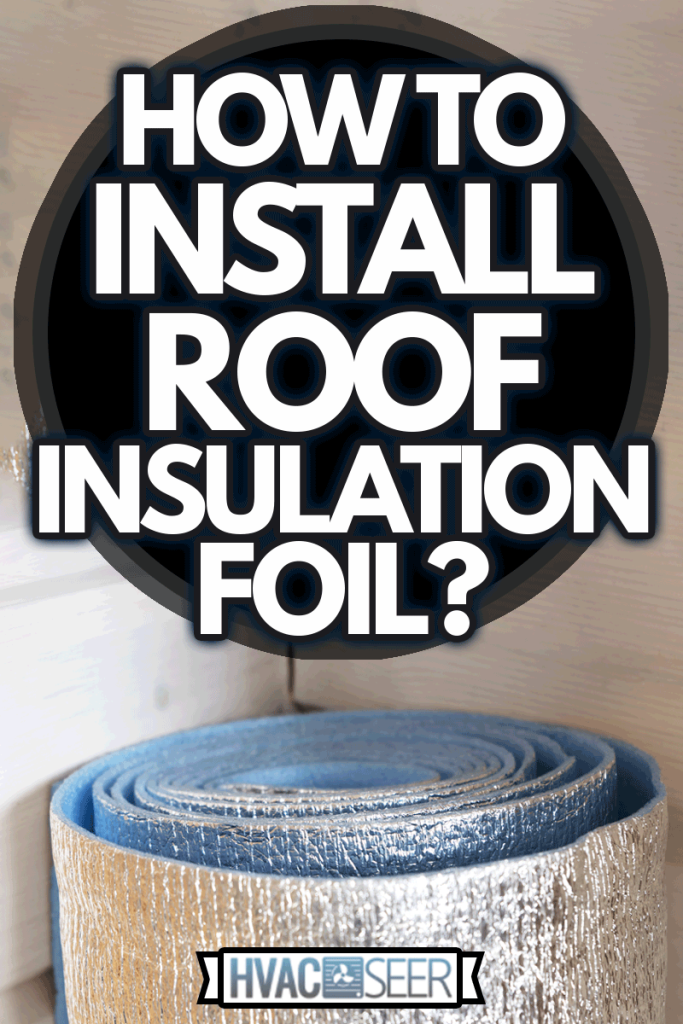
Foil Installation Tips
- Select the best time to install the insulation. During summer, it is best to work in the morning as the heat builds up in the afternoon.
- Set up your tools and materials in the middle of your work area.
- Bring plenty of water to drink while working.
- Have someone assist you with cutting and measuring the foil that you need. Cut the foil in one go to cut down on installation time.
How To Install Foil Insulation
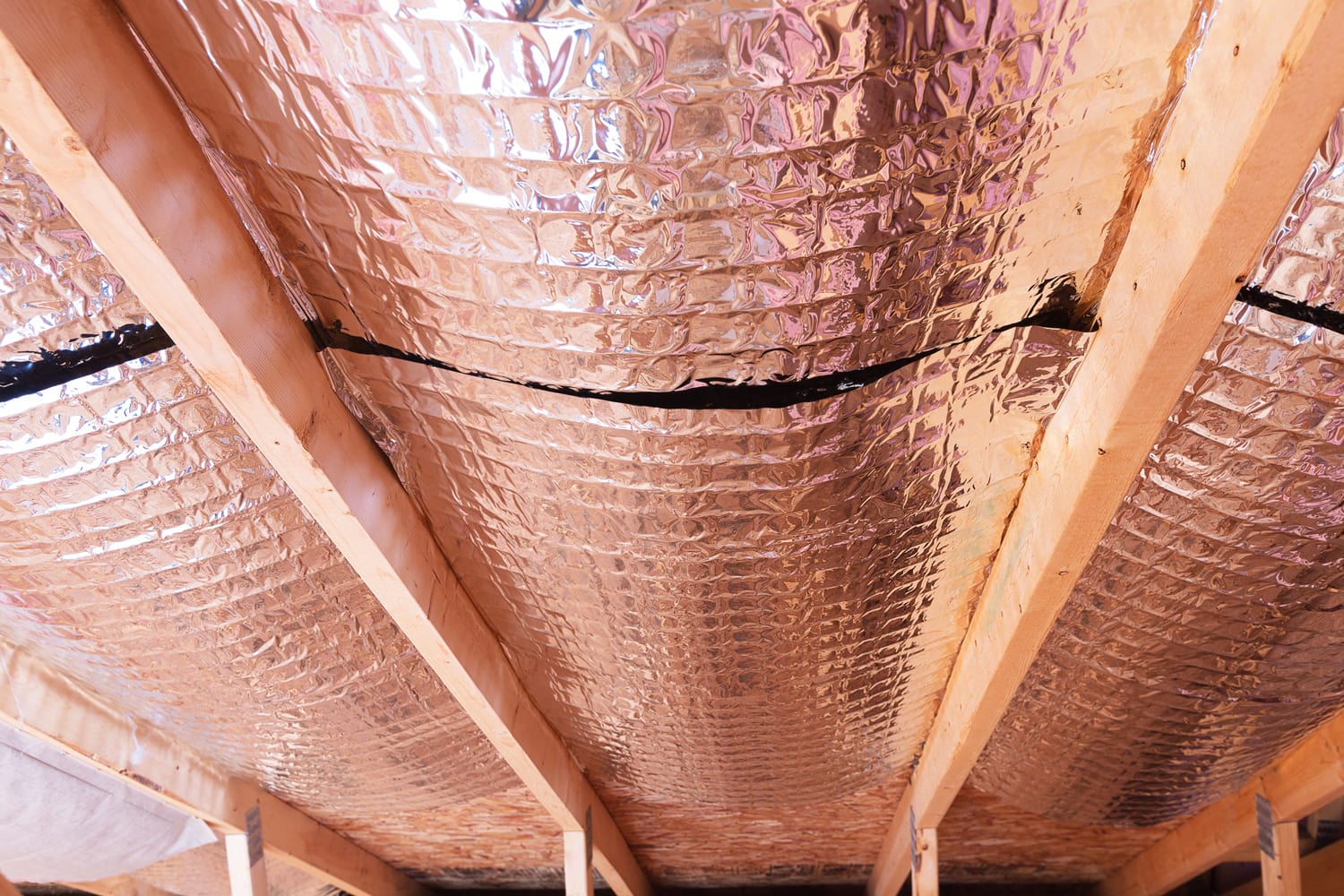
Foil installation depends on the structure of the building and where you plan to install it. You can do all the work in the attic, including cutting the foil. However, if you do not have an attic or your inner ceiling and roof or too small, you can should your materials on a stable, spacious surface when cutting the foil.
There are three possible locations to install an attic foil barrier: you can attach the foil to the underside of the roof decking, hang it from the rafters, or install it in the ceiling insulation. In this post, we will tackle how to install insulation on the roof.
https://www.instagram.com/p/B8R-UxWl_Df/?igshid=YmMyMTA2M2Y=
Installing Insulation Foil On Roof Decking Or Rafters
- Measure the roof length from the peak to the soffit.
- Cut the foil insulation to the size you need. Foil comes in 50 to hundreds of feet rolls. It is easier to cut all the foil you need and roll it before bringing it to the workspace.
Check Insulation Foil Roll on Amazon.
- Unroll the foil and attach it from soffit to peak. At the roof peak, leave several inches of space for ventilation.
- Staple the foil along the inside edge or to the underside of the rafters. Continue stapling the edge of the foil at the truss with an interval of six to twelve inches, towards the top of the ceiling insulation for attic ventilation with a space of two to three inches.
- Next, staple the other side of the foil to the underside or inside edge of the adjacent roof truss. Continue stapling the other side of the foil until you have fully covered the underside of the roof. Leave a strip of a few inches at the roof peak.
Watch the video below to learn more about installing insulation.
Safety Tips:
- Use plywood as a stable surface to step on and place it across two of the attic truss members.
- If there is existing insulation, try to minimize compression.
- Be careful where you step. The ceiling drywall could break and drop you through.
- Have someone assist you in cutting and holding the foil while attaching it to the under roof.
https://www.instagram.com/p/B0mbUxcpTZI/?igshid=YmMyMTA2M2Y=
How Much Does Roof Insulation Cost?
The cost of roof insulation differs depending on the type of insulation used. Foil insulation or radiant barrier costs around $0.20 to $1 per square foot. If you don't have an attic or your ceiling has no opening to pass through, you should hire a professional to make an opening, such as a door, scuttle, or hatch. Many houses without an attic already have an open passage through the ceiling.
Pros And Cons Of Foil Insulation
Pros
Foil insulation blocks 95% of heat radiation. If you are looking to bounce and block radiant heat, use radiant barrier insulation.
Foil insulation does not attract mold, and it does not degrade quickly. It's affordable and energy-efficient, and it can lower your utility costs.
Cons
Foil insulation may not be efficient in cold climates. You may need thermal insulation with radiant barrier insulation because a single-layer aluminum foil does not trap the heat from your indoor heater.
A properly installed radiant barrier can reflect that heat from your indoor heater back into your home before it escapes out of the house. There are plenty of radiant barriers available on the market that you can use in a cold climate to trap the heat in your house. Continue reading through this post for the list of reflective insulation.
Additionally, foil insulation is prone to dust and dirt. Dirt can reduce the effectiveness of the radiant barrier. You should dust the insulation regularly to maintain its efficiency.
Which Side of Foil Insulation Faces Out?
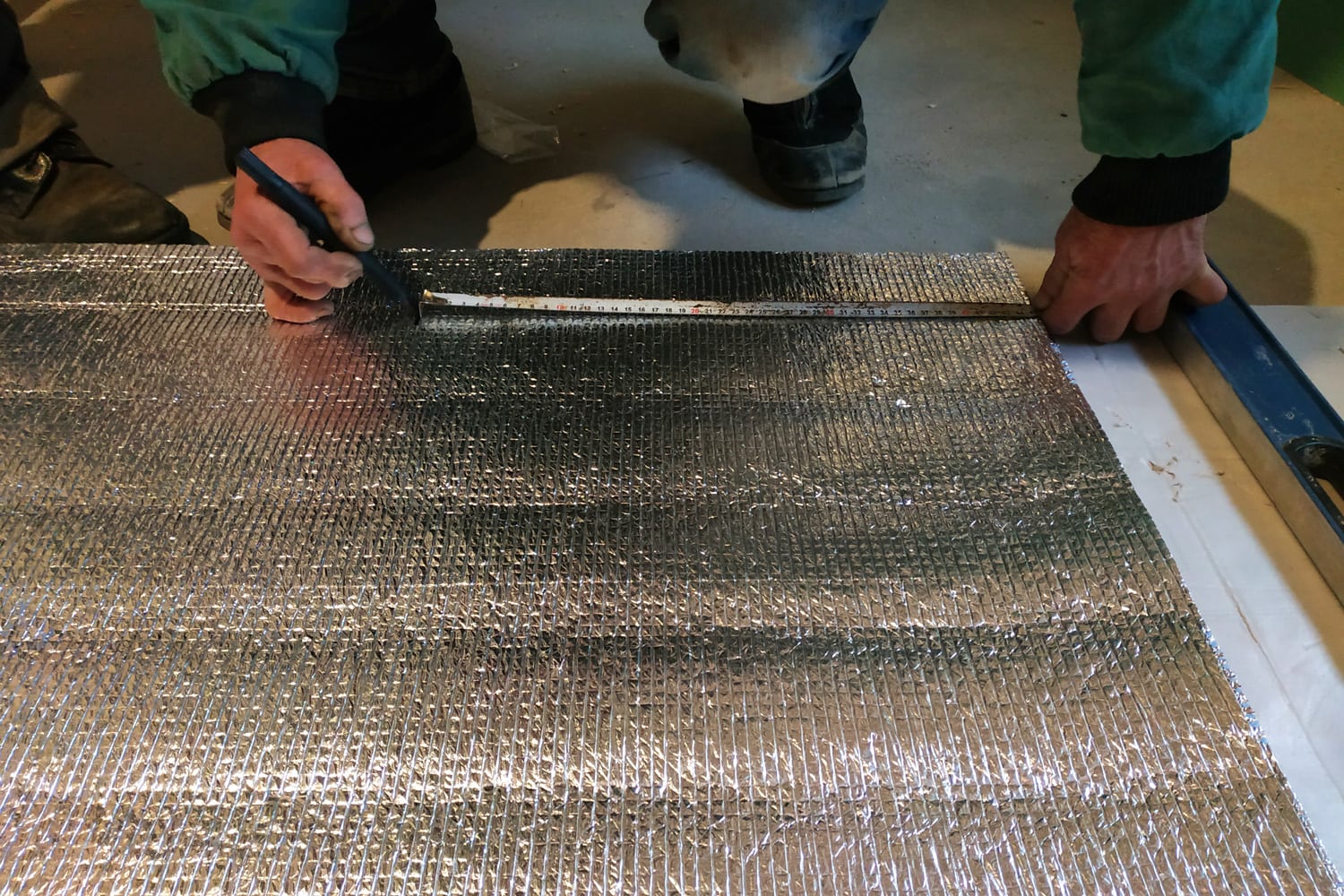
This question depends on the reason you want to insulate your house. The reflective foil's main function is to bounce the heat off of your house. If you live in a colder region, the foil side should be facing towards the inside your house if you are insulating your roof to reflect the heat back to your home.
If the insulation's purpose is for summer or if you live in a hotter region, then the shiny side should face outside to bounce the heat off of your home. If your purpose is for both hot and cold temperatures in different seasons, there are multi-foil insulations you can install instead of the single-layer foil.
What Are The Types Of Foil-Faced Insulation You Can Choose?
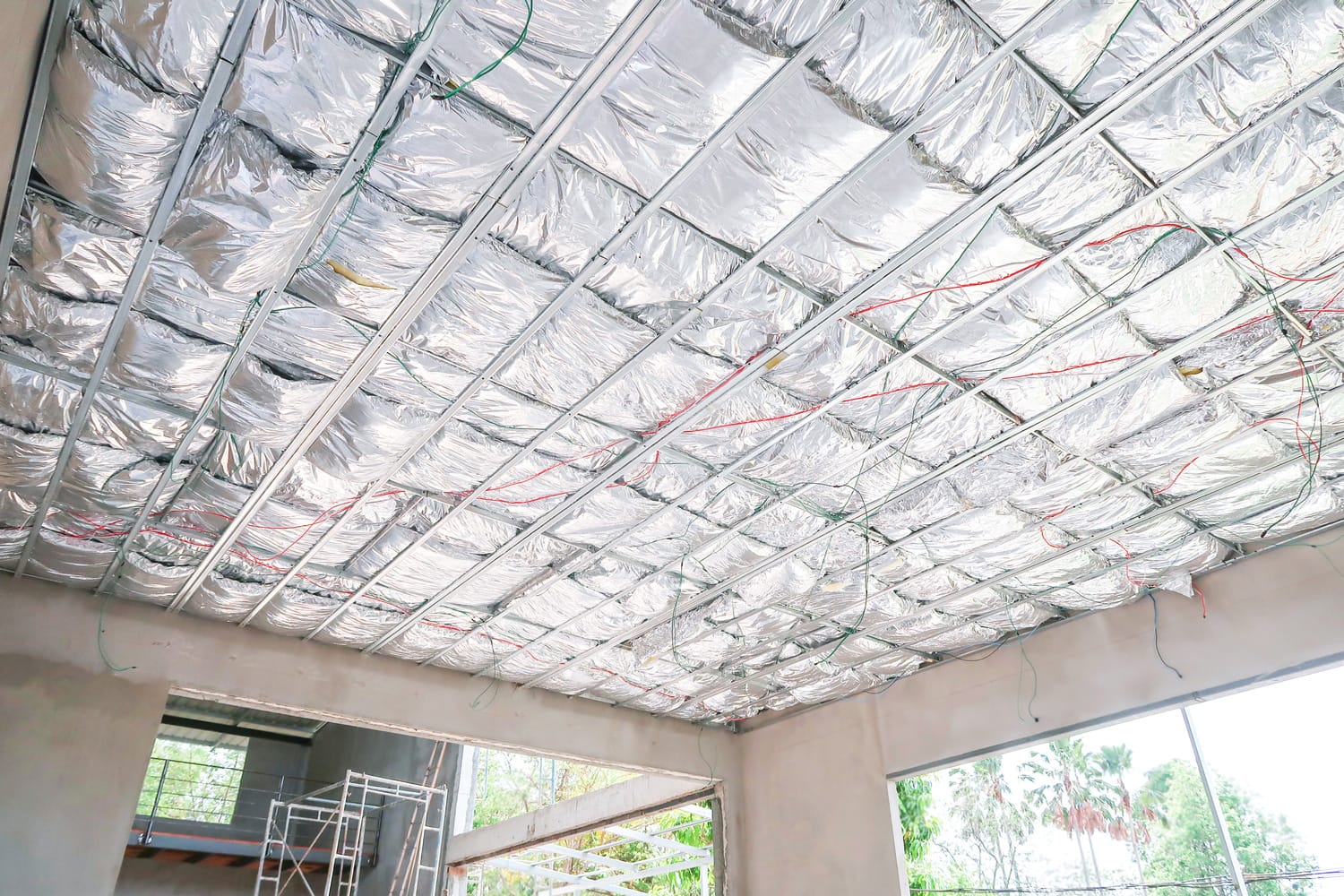
In choosing foil insulation, you should pay attention to its R-value. R-value measures the ability of the insulation to block heat radiation transfer. The higher the R value, the more effective the material is in doing its job. To find out more about the R-Rating of insulation, read the article What R Rating For Attic Insulation?
Listed below are the types of foil insulation you can choose. You can ask the dealer which one works for your home.
- Foil-Faced Fiberglass Insulation
- Foil Bubble Wrap Insulation
- Prodex
- Foil Rigid Insulation Panel
Foil-Faced Fiberglass Insulation
This type of insulation has one layer of 99% aluminum, a portion of fiber core, and durable white scrim-reinforced facing material. This insulation is used in commercial and residential installations.
Check Foil-faced Fiberglass on Amazon.
Foil Bubble Wrap Insulation
This insulation comes with single or double-layer encapsulating air bubble between the sheets of foil. There are two types of Foil Bubble Wrap Insulation: Bubble Reflective and Bubble White Poly Insulation.
Check Double Bubble Reflective Insulation on Amazon.
Bubble Reflective Insulation
This type of insulation acts as a vapor barrier and gives a thermal break. Its surface reflects radiation up to 96%.
Bubble White Poly Insulation
This is recommended in concrete applications because it blocks moisture and toxic gas from entering a house through the soil.
Check Bubble White Poly Insulation on Amazon.
Prodex
This type of insulation has two foil surfaces, high-thermal reflectance and low-emittance reflective foil. There is foam between the sheets made from closed-cell polyethylene. It is durable and stable.
Check Reflective Foam Insulation on Amazon.
Foil Rigid Board Insulation
This insulation is lightweight, has a high thermal break, and acts as a barrier against air. This insulation is composed of aluminum foil face and closed-cell polyisocyanurate.
https://www.instagram.com/p/B1mEL_OHy6H/?igshid=YmMyMTA2M2Y=
In Closing
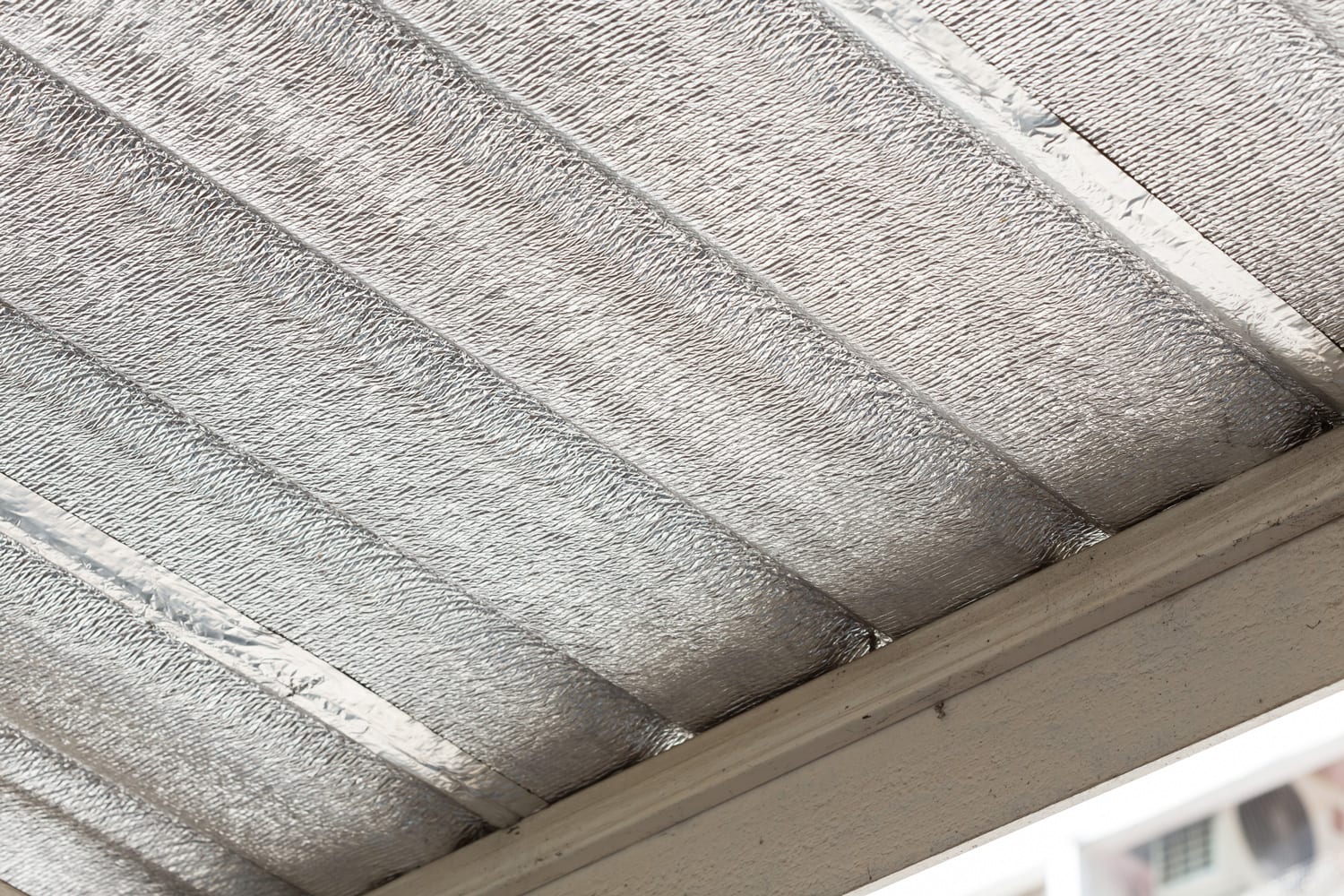
Without insulation, your roof radiates solar-generated heat to your home. Foil insulation or reflective barrier has a thin layer of reflective foil on one or both sides and is designed to block up to 95% of heat radiation.
You may find that installing foil insulation is hard work, but it will benefit you in the long run. Thermal radiation is a health risk, and roof insulation can protect your family's health. Ask your dealer for the best insulation you can use in your home.
For more details about insulation, you should visit these posts:
Does Insulation Help With Cooling?
Where To Buy Rigid Foam Insulation?
How Much Does It Cost To Replace Insulation?





